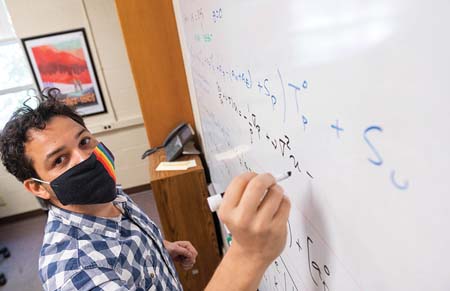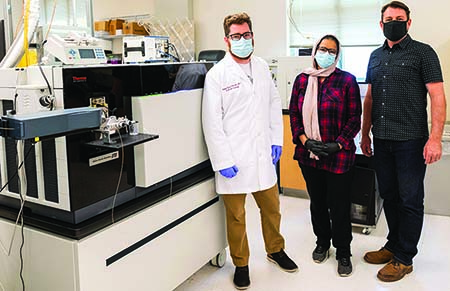Researching an unusual primate from Madagascar landed Ehsan Dehghan-Niri, civil engineering assistant professor, the 2021 National Science Foundation Faculty Early Career Development award. The $579,236 CAREER award will be distributed over the course of five years.
“It’s an honor that stays with you your entire career,” Niri says. “It’s one of the most prestigious funding awards faculty members can receive in the United States. (The committee) recognizes that your research is going to be very important and have a significant scientific impact in that particular field in the future.”
Niri is studying the aye-aye lemur, a small primate with elongated fingers and phenomenal hearing capabilities. The aye-aye uses these morphological features along with its remarkable near-field acoustic-based sensing to find food and survive in the Madagascan rain forests.
Niri’s research aims to closely study these morphological features to improve and revolutionize non-destructive testing methods. Non-destructive testing and non-destructive evaluation methods are used to test critical components in airplanes, pipelines, railroads, bridges and building structures.
Vladimir Avina ’18
Wladimir Lyra, astronomy assistant professor, is helping to create a roadmap of planet formation using supercomputers thanks to a three-year program at NMSU, funded through the National Science Foundation and NASA.
The collaboration includes the University of Arizona; the University of Nevada, Las Vegas; Iowa State University; and the Search for Extraterrestrial Intelligence Institute. Ultimately, they will combine their research to come up with a unified theory.
“This investigation will use powerful computers to produce simulations of planet formation and compare the results with modern observations,” Lyra says. “This research will be able to decide which models are more likely to account for planet formation.”
The project also has an educational component focused on underserved teenagers in the region, with a goal to inspire them to pursue higher education. In three years, Lyra believes he can reach a significant percentage of Las Cruces’ Hispanic teens living below the poverty line.
Minerva Baumann ’13
Research underway at NMSU seeks to advance the understanding of what causes heart attacks and differentiate between heart attack types at a molecular level.
Patrick Trainor (left), assistant professor in the Department of Chemistry and Biochemistry, leads a research team working on an in-depth study of blood samples from heart attack patients.
In February 2021, Trainor’s team received an $888,000 grant from the National Institutes of Health to fund the project for four years. Trainor’s team includes Tanner Schaub (right), director of the NMSU Research Cores Program, NMSU postdoctoral researcher Maha Abutokaikah (center), and NMSU graduate students Hossein Mousavi and Alanna Cover ’18.
The team has since started to analyze blood samples from about 225 patients using a high-resolution mass spectrometry instrumentation platform housed in the NMSU Chemical Analysis and Instrumentation Laboratory. The process will take about two years to complete.
“Once we’ve measured all these thousands of molecules in these different blood samples,” Trainor says, “we’ll use advanced bioinformatics and statistics to try and figure out what is different between these different samples and start building a model that can differentiate the heart attack types.”
Carlos Andres López ’10

Dehghan-Niri

Lyra

Trainer (left)

Dove Hall, Room 212
305 N. Horseshoe Drive
Las Cruces, NM 88003